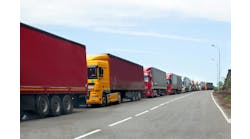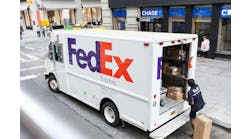Beginning in January 2015, both UPS and FedEx will begin charging for ground shipments on the basis of dimensional weight. This means that based on density of 10.4 lbs/cu ft, the carriers have established a minimum weight for each package. Those packages exceeding the minimum will be billed on actual weight while anything weighing less than minimum will get the minimum charge. So… what is the impact of dimensional weight pricing?
No one really knows yet but I have seen numerous projections of a $500 million increase. One of my colleagues who has worked on packaging optimization for more than 25 years and has visited hundreds of companies for observation says that any estimates thus far are grossly understated. He thinks the cost hit to shippers will be more than $1 billion.
Business reality is that whatever the total dollar impact of dimensional weight pricing, the brunt will be borne by small companies that lack negotiating leverage. The big national account shippers have contracts in place locking in pricing for some extended period. However, anyone who thinks their company will be exempt from this impact – as several large shippers have already told me – will be in for a rude shock as a rising tide always lifts all boats. All contracts have an expiration date and when that arrives if the account profile is not within carrier targeted parameters such as profit margin there will be a move to raise prices.
How You Can Fight Dim Charges
Negotiating with UPS or FedEx, who are experts in this field and have tons of data to back up their decisions, leaves most shippers at a major disadvantage. There is also the reality of the 90% small-package market share held by the two carriers, giving them exceptional pricing leverage. So does all this mean there is nothing that can combat the pricing change of dimensional weight other than to accept it? Absolutely not and here are a few ideas on how to proceed:
- Get started now as dimensional pricing doesn't go into effect until after the Christmas season. Waiting until January to tackle this issue is too late.
- Weighing and measuring some outbound shipments will allow a shipper to at least estimate the cost impact. Budgeting properly won't reduce the cost increase but may help a company prepare better and perhaps avoid a nasty profit shortfall in 2015.
- Ask for a time delay on implementing dimensional weight pricing. I know of major firms that have already received timing reprieves to allow them to get their internal costing mechanisms in place so that they can account for the new pricing properly.
- Request a phased-in density factor. If your shipments average 8 lbs/cu ft and the tipping point is 10.4 lbs/cu ft you can try to get the carrier to apply 9 lbs as the breakpoint for 6 months and then you can accept the full 10.4 lbs/cu ft after that.
- Analyze the shipping cases in use today. One of the boxes I recently evaluated had a dim weight of 3.1 lbs which would be rounded up to 4 lbs for billing since ship weight is always rounded up to the next full pound. A minor reduction in box size – such as one inch less in length – would keep the dim weight at less than 3 lbs, thus generating a 25% lower shipping cost than a 4 lb box.
- Consider adding extra boxes to your portfolio if you are currently using fewer than six in a manual system. In most instances six boxes will generate lower shipping costs than four boxes. But if six is better than four, is ten better than six? The answer is 'yes' in a computerized system but 'no' if you rely on manual box selection: ten becomes too difficult for the order packer to manage effectively.
- Evaluate shifting package volume to USPS, which is usually lower priced than the two big players; the flat rate boxes can be especially cost effective. Note: USPS also prices on dimensional weight.
Get Help in Your Battle
While all of what we've just detailed can be implemented internally for little or no cost, there are ways to raise pick-pack efficiency to another level if one is willing to hire outside resources:
- After analyzing the current array of shipping cases we have been able to recommend a limited number of additional boxes that have reduced both packaging and shipping cost.
- We have written procedures, generated training films and conducted educational sessions to get a minimal baseline of efficiency for all employees in a company (what are best practices and how do we get everyone to understand them?).
- Certain boxes are inefficient due to the ratio of length, width and height. The box in which the length and width are both double the height – such as 6 x 6 x 3 - will always have the lowest cost of construction [and should be lowest in price] due to the limited amount of material in it. Conversely there are other ratios and shapes which always generate higher cost and we direct our clients away from those boxes.
- At one time, computer-aided box selection software was the exclusive purview of large companies that had a WMS residing in an ERP system. This was a complicated expensive investment many smaller companies couldn't make. Nowadays we are able to bring a less complex free-standing software package to the table that will make the smaller shipper as efficient as the giant company without incurring an ERP investment.
of boxes. While this advantage isn't obvious to many executives, the potential benefits are huge. We have seen many clients reduce total expenses by more than $1 million a year just by utilizing the right boxes.
There is also a significant green opportunity as seen by the client that received corrugate weight reduction of 750,000 lbs per year just by specifying the optimal boxes for their computer to consider.
The analysis of how many boxes and which sizes optimize a pick-pack operation is an extremely complicated process because many large companies will ship more than one million unique combinations of weight and cube each year; in fact we have crossed paths with one company that exceeded four million weight / cube combinations in a year. Because we do this analysis via software we can evaluate hundreds of different box sizes to pinpoint the ones that will deliver the lowest total cost for clients.
Don't Make These Mistakes
In viewing the issue of packaging in small package shipments we see experienced executives make the same fundamental errors time and again:
There is a strong bias to fewer boxes. Many times the stated client position is that "we don't want additional boxes." When queried on this, the usual explanation is that it will add complexity and thus increase costs. While we have heard the complexity issue repeatedly we have yet to find a company that can actually attach a price tag to it. Conversely, we can document $1.4 million in annual cost reduction for the large client that accepted three additional boxes, increasing their array from 16 to 19. And this is not an isolated incident. Another significant gain was recorded by the mail order company for which we increased box count from 10 to 12 and delivered cost reduction of 18% in corrugate and 14% in freight.
They gloss over the complexity associated with pick-pack box selection. We have encountered many companies that assigned this difficult project to brand new interns with no operating knowledge. On our side we have packaging engineers with master's degrees and proprietary software with which we have evaluated 400 different boxes against two million unique shipments per year allowing us to consider 800 million possible solutions for one client. Our work using computer analysis took 120 days to complete. Two people working fulltime with spreadsheets would take hundreds of years to do the same work.
Many do not appreciate the difference between engineering disciplines. We have seen packaging analysis performed by industrial engineers, facility engineers and even an aeronautical engineer in one company. What those specialized engineers have learned has no application to packaging engineering, which is an entirely different discipline.
So the dimensional weight train has left the station. Any small package shipper not taking action against this change can expect significant cost increases in 2015. Perhaps the words of Theodore Roosevelt best capture the situation: "In any moment of decision the best thing you can do is the right thing, the next best thing is the wrong thing, and the worst thing you can do is nothing."
Jack Ampuja is president of Supply Chain Optimizers (www.supplychainoptimizers.com), a consulting firm that has done more than 500 packaging optimization projects.




